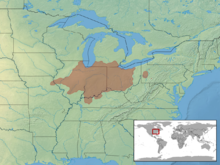
Robert Kennicott was an American naturalist and herpetologist. Chronic illness kept Kennicott out of school as a child. Instead, Kennicott spent most of his time outdoors, collecting plants and animals. His father schooled him at home and convinced naturalist Jared Potter Kirtland to take him as an understudy. Soon, Kennicott was providing specimens for the Smithsonian Institution via assistant secretary Spencer Fullerton Baird.
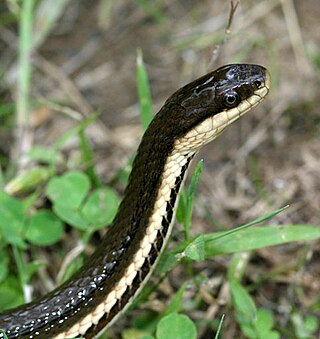
The queen snake is a species of nonvenomous semiaquatic snake, a member of the subfamily Natricinae of the family Colubridae. The species is endemic to North America.
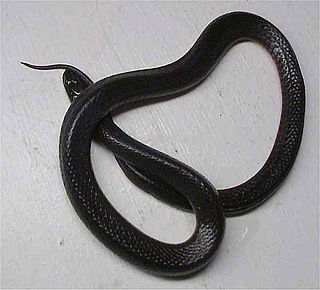
The black swamp snake is a species of snake in the subfamily Natricinae of the family Colubridae. The species is endemic to the southeastern United States. There are three subspecies, including the nominotypical subspecies.

Nerodia is a genus of nonvenomous colubrid snakes commonly referred to as water snakes due to their aquatic behavior. The genus includes nine species, all native to North America. Five of the species have recognized subspecies.

Carphophis is a genus of small colubrid snakes endemic to the United States. The genus consists of two species, one of which has two subspecies.

Carphophis vermis is a species of small, nonvenomous colubrid snake native to the United States.

Thamnophis saurita, also known as the eastern ribbon snake, common ribbon snake, or simply ribbon snake, is a common species of garter snake native to Eastern North America. It is a non-venomous species of snake in the subfamily Natricinae of the family Colubridae. The ribbon snake averages 16 to 35 inches in total length. It is dark brown with bright yellow stripes. The ribbon snake is not sexually dimorphic; however, females are normally thicker than their male counterparts.

Nerodia rhombifer, commonly known as the diamondback water snake, is a species of nonvenomous natricine colubrid endemic to the central United States and northern Mexico. There are three recognized subspecies of N. rhombifer, including the nominotypical subspecies.

The smooth earth snake is a species of nonvenomous natricine colubrid snake native to the eastern half of the United States.

The banded water snake or southern water snake is a species of mostly aquatic, nonvenomous, colubrid snakes most commonly found in the Midwest, Southeastern United States.

Regina grahamii, commonly known as Graham's crayfish snake, is a species of nonvenomous semiaquatic snake in the subfamily Natricinae of the family Colubridae. The species is endemic to the central United States.
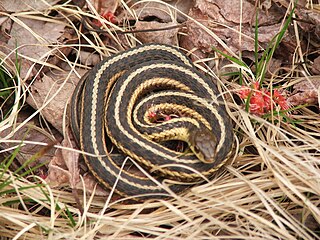
Butler's garter snake is a species of garter snake in the family Colubridae. The species is endemic to North America.

The crayfish snake, also known commonly as the glossy crayfish snake, the glossy swampsnake, the glossy water snake, and the striped water snake, is a species of semiaquatic snake in the subfamily Natricinae of the family Colubridae. The species is endemic to the southeastern United States, and preys mainly on crayfish.

The copperbelly water snake or copperbelly is a subspecies of nonvenomous colubrid snake endemic to the Central United States.
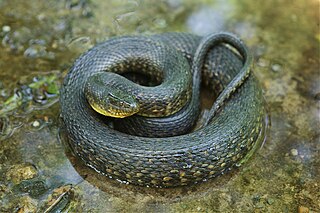
The green water snake is a common species of nonvenomous natricine snake endemic to the southeastern United States.

The midland water snake, a subspecies of the northern water snake, is a nonvenomous natricine snake, which is endemic to North America.

The common watersnake is a species of large, nonvenomous, common snake in the family Colubridae. The species is native to North America. It is frequently mistaken for the venomous cottonmouth.

The midwestern worm snake, Carphophis amoenus helenae, a subspecies of C. amoenus, is a nonvenomous snake in the family Colubridae. The subspecies is endemic to the Midwest and Southern United States.
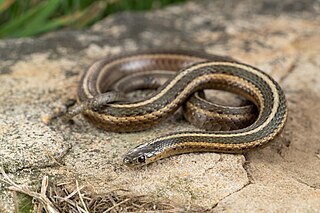
Thamnophis brachystoma, commonly known as the shorthead garter snake or short-headed gartersnake, is a small species of colubrid snake. The species is endemic to the north-eastern United States.
The West Coast garter snake is a species of snake in the family Colubridae. The species is endemic to Mexico. Four subspecies are recognized.

